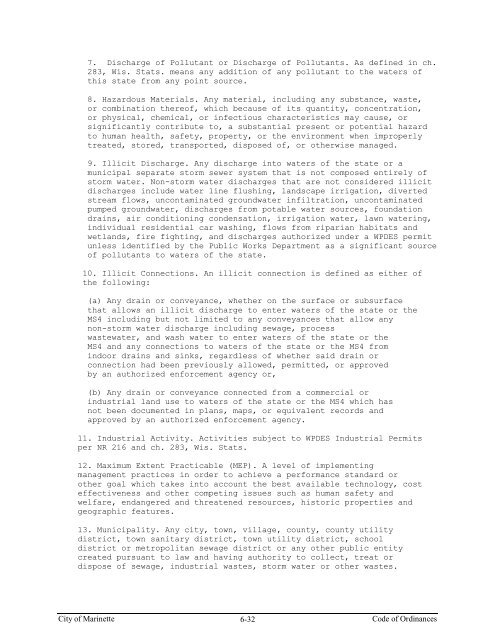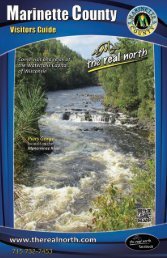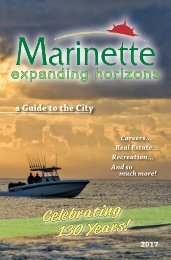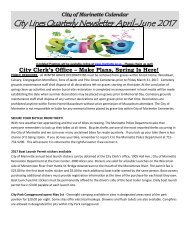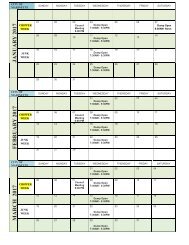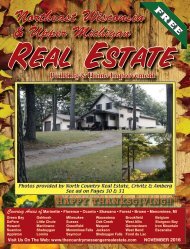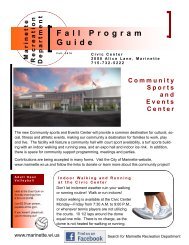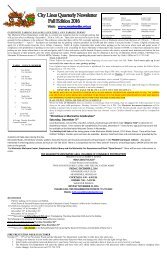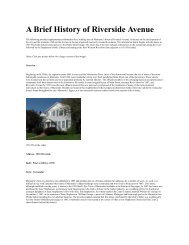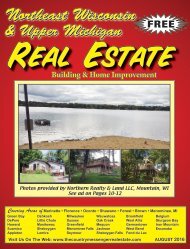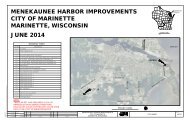Chapter 6 Public Works website ready
Create successful ePaper yourself
Turn your PDF publications into a flip-book with our unique Google optimized e-Paper software.
7. Discharge of Pollutant or Discharge of Pollutants. As defined in ch.<br />
283, Wis. Stats. means any addition of any pollutant to the waters of<br />
this state from any point source.<br />
8. Hazardous Materials. Any material, including any substance, waste,<br />
or combination thereof, which because of its quantity, concentration,<br />
or physical, chemical, or infectious characteristics may cause, or<br />
significantly contribute to, a substantial present or potential hazard<br />
to human health, safety, property, or the environment when improperly<br />
treated, stored, transported, disposed of, or otherwise managed.<br />
9. Illicit Discharge. Any discharge into waters of the state or a<br />
municipal separate storm sewer system that is not composed entirely of<br />
storm water. Non-storm water discharges that are not considered illicit<br />
discharges include water line flushing, landscape irrigation, diverted<br />
stream flows, uncontaminated groundwater infiltration, uncontaminated<br />
pumped groundwater, discharges from potable water sources, foundation<br />
drains, air conditioning condensation, irrigation water, lawn watering,<br />
individual residential car washing, flows from riparian habitats and<br />
wetlands, fire fighting, and discharges authorized under a WPDES permit<br />
unless identified by the <strong>Public</strong> <strong>Works</strong> Department as a significant source<br />
of pollutants to waters of the state.<br />
10. Illicit Connections. An illicit connection is defined as either of<br />
the following:<br />
(a) Any drain or conveyance, whether on the surface or subsurface<br />
that allows an illicit discharge to enter waters of the state or the<br />
MS4 including but not limited to any conveyances that allow any<br />
non-storm water discharge including sewage, process<br />
wastewater, and wash water to enter waters of the state or the<br />
MS4 and any connections to waters of the state or the MS4 from<br />
indoor drains and sinks, regardless of whether said drain or<br />
connection had been previously allowed, permitted, or approved<br />
by an authorized enforcement agency or,<br />
(b) Any drain or conveyance connected from a commercial or<br />
industrial land use to waters of the state or the MS4 which has<br />
not been documented in plans, maps, or equivalent records and<br />
approved by an authorized enforcement agency.<br />
11. Industrial Activity. Activities subject to WPDES Industrial Permits<br />
per NR 216 and ch. 283, Wis. Stats.<br />
12. Maximum Extent Practicable (MEP). A level of implementing<br />
management practices in order to achieve a performance standard or<br />
other goal which takes into account the best available technology, cost<br />
effectiveness and other competing issues such as human safety and<br />
welfare, endangered and threatened resources, historic properties and<br />
geographic features.<br />
13. Municipality. Any city, town, village, county, county utility<br />
district, town sanitary district, town utility district, school<br />
district or metropolitan sewage district or any other public entity<br />
created pursuant to law and having authority to collect, treat or<br />
dispose of sewage, industrial wastes, storm water or other wastes.<br />
City of Marinette<br />
6-32<br />
Code of Ordinances


